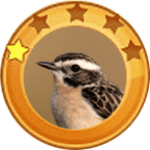- Home
- Shop
- Forest Series
- Grassland Series
- Desert Series
- Contact
- Home
- Shop
- Forest Series
- Grassland Series
- Desert Series
- Contact

Saxicola Series





Ideal Present for Children
Officially authorized by BENTLEY, this children’s ride-on is elaborately scaled down in accordance to the appearance of BENTLEY super-car with almost every detail of the bodywork preserved, such as the LED lights and the hydraulic supported lockable side doors. Molded with premium PP material, the body of this toy vehicle is glossy and realistic, sturdy and durable.
Handy and Comfortable
Just press on the red button on the right of the operating panel, the power will be on with simultaneous sound of engine. Benefited from the soft start setting, the acceleration of this toy vehicle is not violent, which ensures your child would not be shocked by uncomfortable feel caused by sudden change of speed.
Secure Driving
This toy vehicle could be manually operated by children as well as taken over the control by parents with the attached remote controller. Configured with an ergonomic seat and the 3-point safety belt, this toy could fix your child solidly onto the seat and effectively prevent the danger of falling off the car or hitting on the steering wheel during driving.
Abundant Recreation
Except the backlight for the dash board and volume adjusting, this children’s toy car has an easy access to rich audio resources through its TF card slot, 3.5mm AUX input and USB interface, adding much extra joy and relaxation for the driving experience in English-learning mode, story-telling mode and nursery rhyme singing mode, which could be manipulated by the two buttons on the steering wheel.


CHARACTERISTICS
The Chipmunk is a member of the family Mammalia, Rodentia and Sciuridae. It is also known as the Striped Squirrel, the Timber Tiger and the Mini-bear. The body length among most Chipmunks ranges from 5.5 to 6.3 inches and the tail length is 5 Inches. Chipmunks typically weigh about 0.02 pounds and live about 5 to 10 years. They have small but prominent ears which face forwards, and small eyes on the sides of their heads. Most wild Chipmunks are lively.


Lorem ipsum dolor sit amet, consectetur adipiscing elit. Ut elit tellus, luctus nec ullamcorper mattis, pulvinar dapibus leo.


CHARACTERISTICS
The Whinchat is a small migratory passerine bird. It is 4.7 to 5.5 inches long and weighs 0.46 to 0.92 oz. Both sexes have a strong supercilium, brownish upper parts mottled darker, a pale throat and breast, a pale buff to whitish belly, and a blackish tail with white bases to the outer tail feathers, but in the breeding season, the male has an orange-buff throat and breast.

RANGE AND HABITAT
The Whinchat is a migratory species breeding in Europe and western Asia, from Ireland and northern Portugal east to the Ob River basin near Novosibirsk, and from northern Norway south to central Spain, central Italy, northern Greece, and the Caucasus Mountains. They winter primarily in tropical sub-Saharan Africa, from Senegal east to Kenya and south to Zambia.

DIET
The Whinchat is insectivorous, feeding largely on insects but also consuming a wide range of other invertebrates, including spiders, small snails, and worms. They also eat small amounts of fruit such as blackberries, primarily in autumn.

BEHAVIOR
The Whinchat is a largely solitary bird, though it may form small family groups in autumn. It favors rough low vegetation habitats such as open rough pasture or similar minimally cultivated grassland with scattered small shrubs such as hawthorn and bracken or heather standing on rock-strewn ground. It also commonly inhabits new and clear-felled conifer plantations until the new tree crop is about five to six years old and a meter or two tall. It always needs at least a few perching points (shrubs, tall weeds, or fence posts) to scan from for food and for use as song posts.
Breeding takes place in late April and May. The nest is built solely by the female and is made of dried grasses and moss and lined with hairs and fine bents. It is built on the ground, hidden in dense low vegetation, often at the foot of a bush. The female lays and incubates a clutch of four to seven eggs, which hatch after eleven to fourteen days. Both parents bring food to the young, which leave the nest ten to fourteen days later while still too young to fly. The chicks fledge seventeen to nineteen days after hatching and remain largely dependent on their parents for a further two weeks.

The Chipmunk is a member of the family Mammalia, Rodentia and Sciuridae. It is also known as the Striped Squirrel, the Timber Tiger and the Mini-bear. The body length among most Chipmunks ranges from 5.5 to 6.3 inches and the tail length is 5 inches. Chipmunks typically weigh about 0.02 pounds and live about 5 to 10 years. They have small but prominent ears which face forwards, small eyes on the sides of their heads. Most wild Chipmunks are lively.
The Red Squirrel, a member of the Sciuridae, is an arboreal, omnivorous rodent often referred to as a Forest Seeder and folklore as the Devil King Squirrel.
The Arizona Gray Squirrel, also known as the American Gray Squirrel, is a member of the family Rodentia and Sciuridae. It is small in size, with gray fur and a belly between white and cream. It has long ears, no tufts of fur and a fluffy tail edged in white. The body is about 16-20 inches long and weighs up to 1.4 pounds.
The Rock Squirrel, also known as Sao Maozi or Stone Mouse, belongs to the rodent and is a species in the family Sciuridae. The most common natural predators of the Rock Squirrel include bobcats, owls, eagles and snakes. Though the Rock Squirrel is cute, alert, and courageous, it is still considered a pest due to its habit of destroying crops.
The Abert’s Squirrel is a member of the genus Sciurus with a body length of 18-22.8 inches, a tail length of 7.5-9.8 inches and a weight of 2.2 pounds, and can live up to 10 years in the wild. Its most distinctive feature is tassels of fur about 0.8-1.2 inches long at the tip of its ears, which looks very interesting. In addition, it is alert and agile.

An Unexpected Encounter With a Little Devil
A new tradition was born yesterday as my partner and I stepped out for our inaugural ‘New Year’s Day Family Bird Walk’. It sounds geeky and it is and I don’t care. Birds are a very visible reminder of an important fact — that we are only a small part of our universe’s hard-beating heart. They keep me grounded with every beat of their wings.
Our plan is simple: to devote a portion of the first day of each year to a stroll in some wild place and find as many birds as we can. It’s a small way for us and our child to stay in touch with life as nature sees it. So I’m glad to report that our inaugural bird walk bore rewarding fruit, in the form of a small creature with a hint of the devil about him.
To begin our new tradition, we followed the advice of David Lindo and took a walk around Wormwood Scrubs, a nature reserve in a part of London best known for the prison of the same name. The sun was out and the sky cloudless. In just over an hour we had hit our modest target of 15 species.
The highlight was a male Stonechat just like the one in the photo above. I used to see this species back home on the island of Jersey but never expected to find it so close to the centre of big old urban London. As I watched the bird forage I realised how little I knew about this species apart from its name. Here’s what I have since learned…
This plucky little creature is rare among insect-eating birds in braving the British winter instead of flying South. It gets its name from the noise it makes when alarmed — a sharp “tyeck!-tyeck!” that you can recreate if you strike one pebble against another. But like most British birds, it has several other names that have fallen into obscurity. They include Blacky-top, Chickstone, Furze Chitter, Stanechacker, Stane Chipper and Stonesmith. Some of these refer to the way the bird will jerk its tail and beat a stone on which it perches.
So far, so standard, but the Stonechat also features in some stories from near-forgotten folklore. One says that toads will sit on, and even hatch, a Stonechat’s eggs when it leaves the nest. Another says the bird carries a drop of the devil’s blood. A Scottish rhyme warns that anyone who meddles with the birds nest “will never rest, will meet the pest”. To ram the message home it adds that the devil will break the back of anyone who dares to take the bird’s eggs.
But the bird was only a blessing as it brightened our day. We didn’t expect to meet an avian emissary of Satan but I’m glad we did. Life’s more interesting with a splash of colour — like that bloodspot on the Stonechat’s chest. I hope our future New Year’s walks produce similar surprises.



Follow Us: